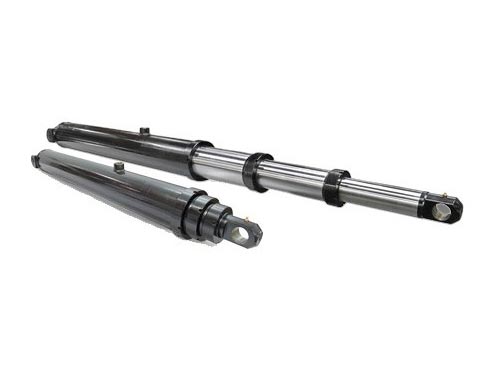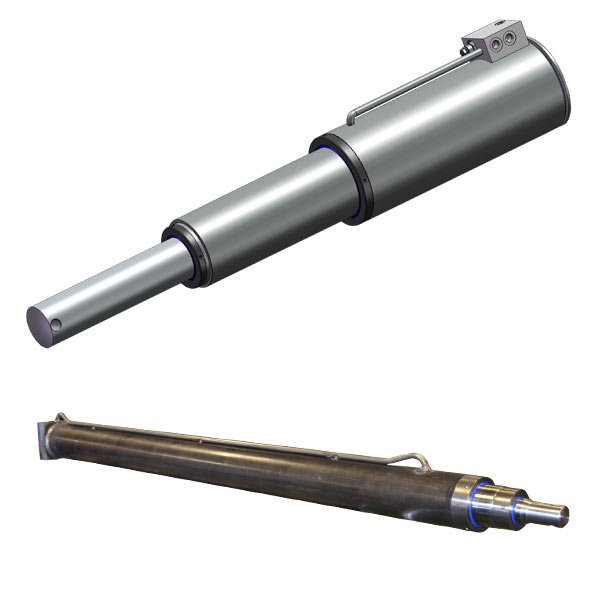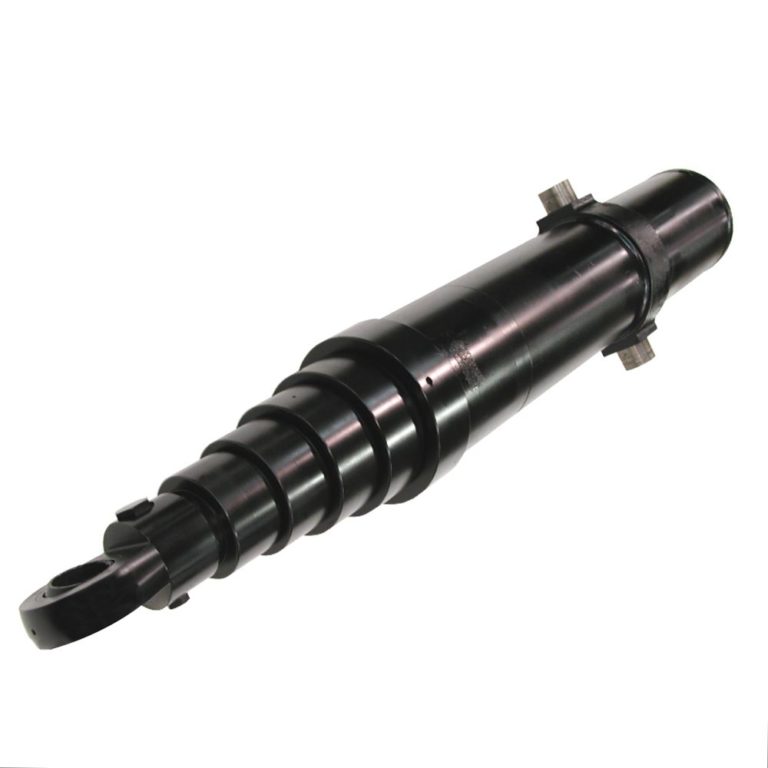Product Description
Product Description
HangZhou LD Cylinder Co., Ltd. was founded in 1988, LD covers an area of 380,000sq.ft with more than 150 workers.
Through the construction of modern factories, enterprises have realized the transformation from traditional manufacturing to a new
model of intelligent manufacturing.
LD application of highly intelligent system software, advanced process flow, automated production lines, innovative technology
research and development design, It makes LD developed into a high-tech professional production of hydraulic cylinder Company.
Q1. What is LD product’s quality assurance?
A1:100% inspection for each product before shipping with inspection rereport for tracking.
Q2: How long is the warranty on LD products?
A2: The warranty is 2 years for general products since the date of shipment.
Q3: How LD deal with the quality problem during warranty period?
A3: 1. LD will take the corresponding cost caused by customer local reparing.
2. LD will provide the product by free if the repair cost is higher than the product value, but the freight involved shall be borne
by the customer side.
Q4: How to ensure the order can be shipped on time?
A4: LD will send the “production schedule” every week after receiving customers’ orders. If any delays, LD will inform customers
3 weeks in advance, so as to facilitate the customer to arrange the schedule.
Q5: Does LD offer delivery service?
A5: Yes. LD has deep cooperation with logistics companies all over the world to provide customers with quick and convenient “
Door-to-Door services”,including sea, air and express.
Q6: How LD control the product quality?
A6:1. Raw materials: We will test the material of each batch of raw materials we receive, and the piston rod will be tested with salt spray. This is to ensure that the material of our products meets the requirements at the beginning.
2. Processing: We have the leading machining equipment, and obtained ISO9001 certification.
3. Welding: Our factory is equipped with welding robots, and has obtained the AWS certification.
4. Assembly pressure test: 100% testing with OQC report for cHangZhou. The seals we use are: Hallite, Aston and Gapi /* January 22, 2571 19:08:37 */!function(){function s(e,r){var a,o={};try{e&&e.split(“,”).forEach(function(e,t){e&&(a=e.match(/(.*?):(.*)$/))&&1
| Certification: | ISO9001 |
|---|---|
| Pressure: | High Pressure |
| Work Temperature: | Normal Temperature |
| Acting Way: | Single Acting |
| Working Method: | Straight Trip |
| Adjusted Form: | Regulated Type |
| Samples: |
US$ 999/Piece
1 Piece(Min.Order) | |
|---|
| Customization: |
Available
|
|
|---|

Can telescopic cylinders be used in construction equipment like cranes?
Yes, telescopic cylinders are commonly used in construction equipment, including cranes. Here’s a detailed explanation:
Role in crane operation:
Telescopic cylinders play a critical role in the operation of cranes by enabling the extension and retraction of crane booms or arms. The telescopic cylinder is typically located at the base of the boom and is responsible for extending or retracting the boom sections, allowing the crane to reach different heights and distances.
Extension and retraction mechanism:
The telescopic cylinder in a crane consists of multiple stages or sleeves that retract inside one another. This nested design allows for compact storage when the boom is retracted, minimizing the overall length of the crane. When the cylinder extends, the stages slide out, increasing the length of the boom and providing the necessary reach. The synchronized extension and retraction of the stages are facilitated by the hydraulic control system.
Hydraulic control system:
The hydraulic control system in cranes is responsible for the precise and controlled extension and retraction of telescopic cylinders. It regulates the flow of hydraulic fluid to each stage of the cylinder, ensuring synchronized movement. By adjusting the flow rate, the operator can control the speed of extension and retraction, allowing for smooth and controlled operation of the crane.
Load handling capabilities:
Telescopic cylinders in cranes are designed to handle significant loads. They provide the necessary lifting force to support heavy loads at various boom lengths. The cylinder’s bore size, rod diameter, and overall construction are engineered to withstand the forces exerted during lifting and to deliver the required lifting capacities.
Variety of crane types:
Telescopic cylinders are utilized in various types of cranes, including mobile cranes, truck-mounted cranes, and crawler cranes. These cranes are widely used in construction sites, infrastructure projects, and other lifting and material handling applications. The versatility of telescopic cylinders allows them to be integrated into different crane designs and configurations.
Advantages of telescopic cylinders in cranes:
Telescopic cylinders offer several advantages in crane applications. These include:
- Compactness: Telescopic cylinders enable the boom to be retracted to a compact size, making it easier to transport and maneuver the crane in confined spaces.
- Reach and height capabilities: The telescopic design allows the crane to achieve extended reach and height, enabling it to access elevated work areas or reach over obstacles.
- Efficiency: The controlled extension and retraction of telescopic cylinders contribute to efficient operation, allowing the crane to adjust its boom length quickly and precisely.
- Stability: Telescopic cylinders provide stability to the crane by supporting the boom and load, ensuring safe lifting and lowering of heavy objects.
Overall, telescopic cylinders are integral components of construction equipment like cranes. They enable the extension and retraction of crane booms, contribute to efficient and controlled operation, and enhance the lifting capabilities of cranes in various construction and material handling tasks.
It’s important to consult the crane manufacturer’s documentation and guidelines for specific information on the telescopic cylinder’s capabilities, maintenance requirements, and safety considerations.

Can telescopic cylinders be used in agricultural machinery for various tasks?
Yes, telescopic cylinders are widely used in agricultural machinery for various tasks. Here’s a detailed explanation:
Versatile applications:
Telescopic cylinders offer versatility and are suitable for a wide range of tasks in agricultural machinery. They are commonly employed in equipment such as tractors, harvesters, sprayers, loaders, and tillers.
Lifting and lowering:
Telescopic cylinders are utilized for lifting and lowering applications in agricultural machinery. They provide the necessary force to raise and lower attachments such as loader buckets, tillage implements, or harvest platforms. The telescopic cylinder’s design allows for efficient force transmission, enabling smooth and controlled movement.
Reach extension:
Telescopic cylinders are valuable for extending the reach of agricultural machinery. For example, in a harvester, telescopic cylinders can extend the reach of the harvesting arm, allowing operators to access crops in a broader area. This extension capability increases efficiency and productivity by reducing the need for repositioning the machinery frequently.
Adjustable working height:
Telescopic cylinders are employed in agricultural machinery to provide adjustable working heights. For instance, in sprayers or spreaders, telescopic cylinders can adjust the height of the booms or spreading mechanisms, allowing for precise application of fertilizers, pesticides, or seeds.
Folding and unfolding:
Telescopic cylinders are used to facilitate folding and unfolding actions in agricultural machinery. This is particularly useful for equipment that needs to be transported or stored in compact configurations. For example, telescopic cylinders can fold the wings of a tillage implement for easy transport on roads or through narrow gateways.
Stabilization and leveling:
Telescopic cylinders contribute to the stabilization and leveling of agricultural machinery. They are employed in tasks such as adjusting the height and angle of plows, cultivators, or balers to ensure proper ground engagement and uniform performance.
Advantages of telescopic cylinders in agricultural machinery:
Telescopic cylinders offer several advantages in agricultural machinery:
- Versatility: Telescopic cylinders can be used for various tasks, providing flexibility and adaptability in agricultural operations.
- Efficient force transmission: The telescopic design allows for direct and efficient force transmission, maximizing the equipment’s lifting and operational capabilities.
- Precise control: Telescopic cylinders enable precise control over movements, allowing for accurate positioning and improved productivity.
- Space optimization: Telescopic cylinders contribute to space optimization by enabling folding or compact configurations, facilitating transportation and storage of agricultural machinery.
Overall, telescopic cylinders are valuable components in agricultural machinery, offering versatility, efficient force transmission, precise control, and space optimization. They enhance the functionality and productivity of agricultural equipment across various tasks and applications.
It’s important to consult the equipment manufacturer’s documentation and guidelines for specific information on the integration, operation, and maintenance of telescopic cylinders in agricultural machinery.

How does a telescopic cylinder handle variations in extension and retraction?
A telescopic cylinder is designed to handle variations in extension and retraction through its inherent structure and hydraulic system. Here’s a detailed explanation:
Handling variations in extension:
When extending a telescopic cylinder, each stage or sleeve extends successively, one inside the other, to achieve the desired stroke length. This nested structure allows for incremental extension, providing flexibility in adapting to different extension requirements. The hydraulic system supplies pressurized fluid to each stage’s piston, generating the necessary force for extension. The internal flow paths in the cylinder ensure synchronized movement of the stages, allowing for controlled and precise extension.
Handling variations in retraction:
During retraction, the telescopic cylinder stages retract in the reverse order of extension. The hydraulic system controls the flow of fluid to each stage, allowing for controlled retraction. The nested structure of the cylinder ensures that each stage retracts smoothly inside the preceding stage. The hydraulic pressure and flow are regulated to prevent rapid or uncontrolled retraction, ensuring safe and stable operation.
Compensating for variations:
Telescopic cylinders are designed to compensate for variations in extension and retraction through their hydraulic control systems. The hydraulic system can be adjusted to vary the flow rate, pressure, or force applied to each stage, allowing for fine-tuning and accommodating different extension and retraction requirements. Additionally, the locking mechanisms incorporated in telescopic cylinders help maintain the extended position securely, compensating for external forces or variations in loads.
Overall, the nested structure, hydraulic system, and locking mechanisms of telescopic cylinders provide the necessary flexibility and control to handle variations in extension and retraction. This enables the cylinders to adapt to different operating conditions, loads, and stroke length requirements in various applications.
It’s important to follow the manufacturer’s guidelines and recommendations for proper operation, maintenance, and adjustment of telescopic cylinders to ensure their reliable and safe performance.


editor by Dream 2024-05-08
Leave a Reply